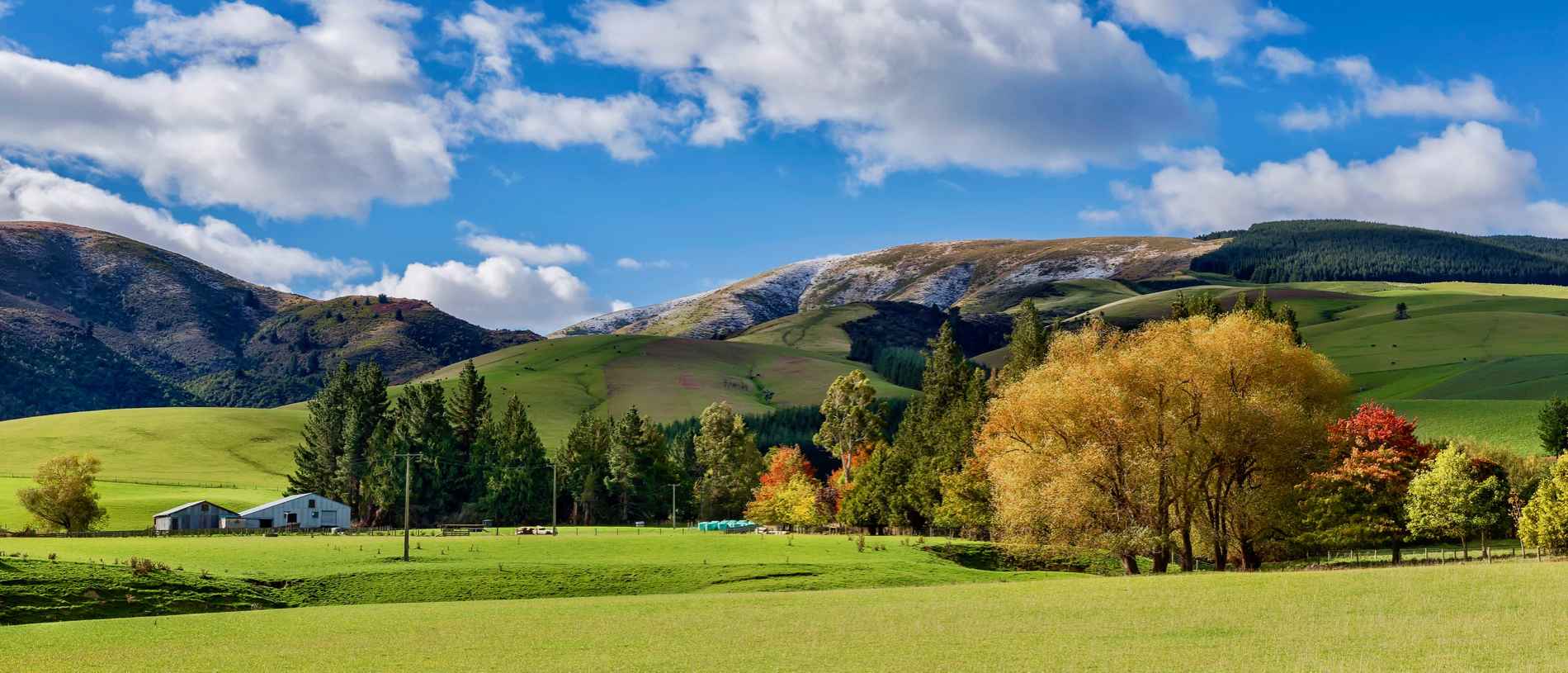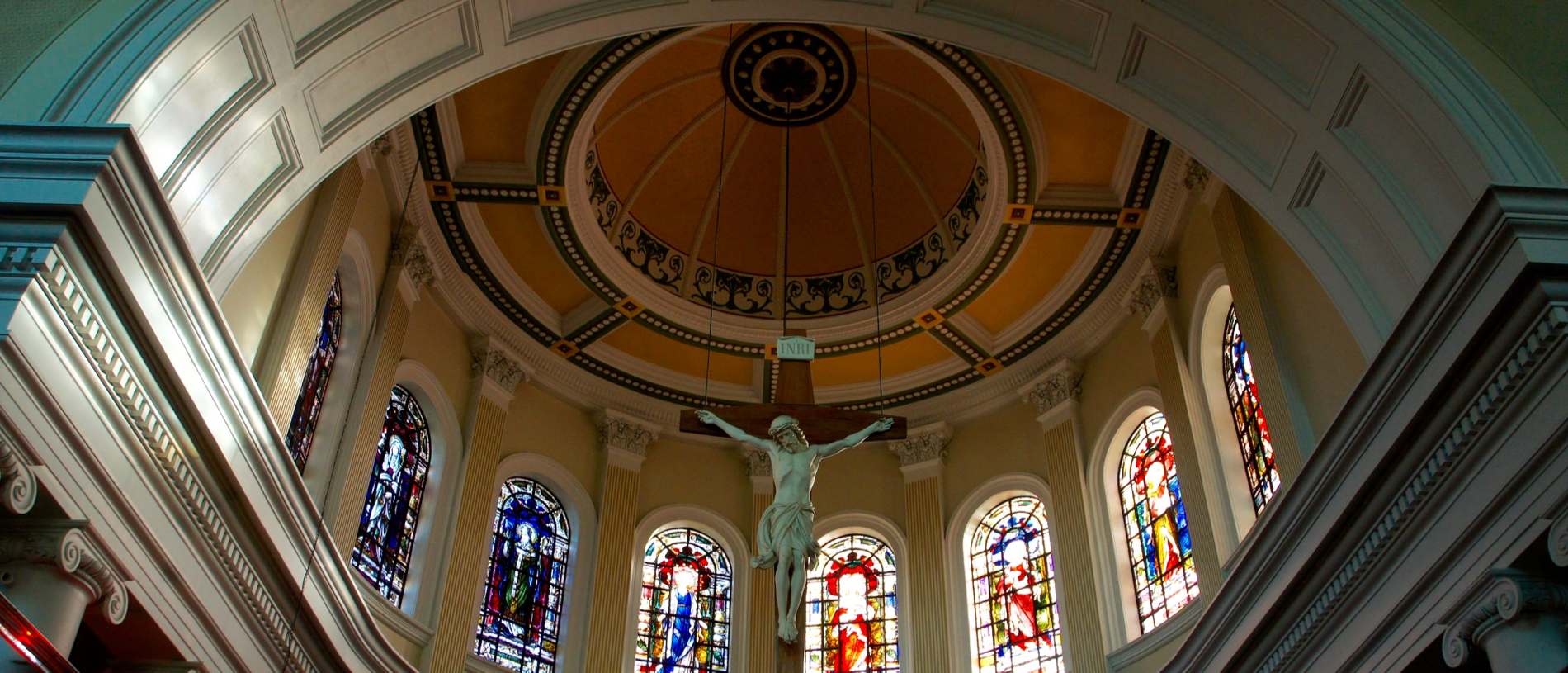
Geraldine: tasty town
The South Canterbury town of Geraldine is home to some of New Zealand’s most successful food producers.

Big skies, a long, lonely coastline of restless ocean with few safe havens, a region of dead straight roads cleaving some of New Zealand’s most productive dairy farms and of mountain valleys, remote and wild.
South Canterbury’s landscapes are born of its location – bounded by two of Canterbury’s unique braided rivers, the Rangitata and the Waitaki, flanked on one side by the Pacific Ocean and to the west the Southern Alps. Settled and traversed by Māori for centuries, colonised by Europeans pastoralists, adventurers, pioneers and the odd rogue, it’s bred a diversity of pioneers and entrepreneurs, artists and farmers.
At its heart, the city of Tīmaru. We became world-famous in New Zealand in 2004: Deja Voodoo’s Today, Tomorrow Tīmaru thudded on to the airwaves.
“Say Goodbye to Caroline Bay” went the lyrics, but hello, there on the accompanying video was our swathe of sand backed by wave-beaten cliffs. Caroline Bay voted one of New Zealand’s most loved beaches by AA Traveller (the most popular in the South Island no less); our very own star of the sea. “Caroline Bay, where I met you,” lamented Deja Voodoo, “Caroline Bay, where I left you”. Both possible scenarios at the Bay’s legendary and long-lived summer carnival – free concerts, talent quests, hot dogs, candy floss and rides; you’re not really a South Cantabrian if you haven’t reeled off the marathon Octopus ride feeling slightly queasy…
Caroline Bay, the only sandy beach between Ōamaru and Banks Peninsula, was revitalized in the mid-2000s, a multi-million-dollar project that still surprises travellers who haven’t stopped by for a while as they traverse State Highway 1. There’s a boardwalk, a growing colony of little blue penguins who nest just metres from one of the South Island’s busiest ports, the Trevor Griffiths Rose Garden and a promenade linking the beach with the city via the Piazza with its cascading waterfall and panoramic views across the bay and up to the Alps.
Caroline Bay is Tīmaru’s pride and joy, but not our only one. The city’s European settlement dates back to 1859, but Māori were here long before; their treasury of rock art (South Canterbury together with North Otago has the greatest concentration in New Zealand) is celebrated in the Te Ana Rock Art Centre. Ngāi Tahu not only welcome visitors to view the art but also tell stories of the world’s giant eagle that once swooped among the region’s limestone outcrops. Te Ana is housed in the Landing Service Building, a one-of-a-kind structure and one of the oldest buildings in the region.
Whether or not motorists have resisted the lure of the Bay or the Edwardian façades that line Stafford Street, Tīmaru’s main thoroughfare, they can’t miss another architectural masterpiece, one that has gained in significance since the Canterbury earthquakes. The twin towers and copper dome of the Sacred Heart Basilica are right on State Highway 1 (named Craigie Avenue as it passes through south Tīmaru) was the work of celebrated Dunedin architect F. W Petre. One of his most notable achievements was the Cathedral of the Blessed Sacrament in Christchurch, which suffered extensive damage in the February 2011 quake, making the intact Tīmaru basilica especially valued.
But there is more to Tīmaru for those who stay longer than the time it takes to have a paddle on the Bay or take a quick photo of the Basilica. The Aigantighe Art Gallery is one of the South Island’s best, albeit one of the more difficult to pronounce (actually, the Gaelic is relatively easy to untangle – just say Egg-an-tie). It has a permanent collection including works by New Zealand masters Colin McCahon, Frances Hodgkins and Charles Goldie, along with local artists and temporary exhibitions.
Tīmaru is a city of stories – shipwrecks, mysterious demises and, on a less dire but equally dramatic note, sporting heroism. With the stories comes intrigue.
Our four-legged champion is racehorse Phar Lap, Australia’s greatest who died in mysterious circumstances. He’s commemorated in bronze at full gallop at the racetrack that also bears his name at Washdyke on Tīmaru’s northern boundary. Te Papa might have his skeleton, Canberra his heart and Melbourne his hide but South Cantabrians regard him as theirs – born and raised close the Pacific and in sight of the mountains, just like thousands of them have been.
In Tīmaru itself are statues to other sporting legends, world heavyweight boxing champion Bob Fitzsimmons and, in the grounds of his old school, Tīmaru Boys’ High, stands Olympic gold medallist and world record holder Jack Lovelock.
The South Canterbury Museum that graces a rise near the centre of town is a great source of more information on the town’s history and features a full-size replica of pioneer aviator Richard Pearse’s homemade monoplane. Did he achieve controlled, engine-powered flight before the Wright Brothers? There are still people around the region who think so.
Ponder the possibilities at a café/restaurant on the Bay Hill – a favourite haunt of locals from breakfast to dinner in the evening. There are three venues to chose from here; or head deeper down town: spot the interlopers on the giant photograph that graces the wall of the Oxford Bar or dip into Japanese, Thai or Indian cuisine elsewhere in the CBD. The Purple Lizard does a breakfast that can fuel the biggest appetite.
If a local speciality is on your menu, search out a Denheath custard square. First created in Pleasant Point (about 15 minutes away on State Highway heading for the Mackenzie Country) these are now made in Tīmaru and devoured not only here, but all over New Zealand and overseas. All other custard squares pale in comparison (just don’t try eating one without a fork…there lies pastry and fluffy custard disaster).
Tīmaru might be the region’s hub but there is much more to South Canterbury.
Half an hour to the south is Waimate. You need to detour off SH1 but as the turn off is marked by Nosh, a café with a legendary reputation for spectacular baking, it’s no hardship. One of the town’s newest attractions is hard to miss – epic murals painted on four giant grain silos. Look out for hometown lads former PM Norman Kirk and Eric Batchelor, twice awarded the Distinguished Conduct Medal.
Time your visit right and taste some of the town’s other claims to fame – berries, especially strawberries. These star in December’s annual Strawberry Fare when thousands of visitors work their way through hundreds of kilograms of berries.
Waimate district is also the stomping ground of the wallaby. The Hunters Hills behind the town are one of the few places in New Zealand where wallabies, introduced in the 19th century, have successfully colonised. A pest, they are still somewhat controversially regarded as a kind of a local icon.
It’s also full steam ahead in Waimate’s developing Bushtown, a heritage centre that celebrates the town’s forestry heritage. There’s a working steam-driven sawmill and a miniature railway. Another work in progress is the restoration of possibly New Zealand’s oldest shopping mall, Quinn’s Arcade, built between 1905 and 1907, and later reincarnated as the Arcadia Theatre. It’s a brick masterpiece – 296,970 bricks in fact.
Back on the custard square trail from Tīmaru, it’s out to Pleasant Point on SH8 and if you strike a steaming day at the Pleasant Point Railway and Historical Society take a journey back in time aboard the replica Model T railcar or in a restored carriage pulled by the 1878 D16 steam train or the massive AB699 (one of only seven of its kind left in the world).
From the Point, take the backroads through heartland farms to Geraldine. Europeans began settling here in the 1840s at which time the area was still clothed in native forest. Edward Hewlings built the first bark hut in 1854 and a tōtara he planted at the time still stands in the main street. By 1857 the town, which had gone through a variety of names, was officially declared to be Geraldine, in memory of Canterbury Superintendent James Edward FitzGerald’s Irish ancestry.
The remnants of the heavily milled forest still remain on the town’s outskirts. There are walks through Talbot Forest Scenic Reserve and its now protected matai, kahikatea and tōtara trees. The largest tōtara in the reserve is believed to be about 800 years old.
Geraldine is also home to Barker’s Fruit Processors, who began life in nearby Pleasant Valley making fruit wines and then their legendary blackcurrant juice. Today, few New Zealand pantries are without a jar or two of Barker’s preserves, cordials or sauces. They might be readily available in supermarkets but that doesn’t stop aficionados making a beeline for their Geraldine shop to taste the latest products
Known as the gateway to the Mackenzie district, Geraldine is well attuned to travellers; the Saturday morning farmers’ market is a great place to compile a picnic or let the locals do the cooking at Café Verde, which is behind the town’s historic former post office building. Also tucked in here is the Susan Badcock Studio featuring her hand-painted photographs and work by her father, John.
Geraldine might be known as the gateway to the high country lakes and Aoraki/Mt Cook but you don’t need to leave this region to find awe-inspiring alpine scenery with a fraction of other visitors.
Take SH79 north out of Geraldine and turn off to Peel Forest, the remains of native lowland podocarp forest that was once widespread across the region. There are bush and waterfall walks or you can doze on a picnic rug and listen to the bellbirds and tūī. Almost as tuneful: in the tiny Peel Forest township there’s a café that has regular live music nights.
Beyond Peel Forest the road begins to wind steadily up beside the Rangitata Gorge (there’s white water rafting here for the adventurous) before a vast panorama opens up – the ragged peaks of the Two Thumb Ranges, the braided channels of one of Canterbury’s largest rivers and, at the end of the road, one of New Zealand’s legendary sheep stations, Mesopotamia.
Mesopotamia was named in 1860 by explorer, artist and writer Samuel Butler, who owned the station for about four years. If the landscapes look familiar it’s no surprise: Mt Sunday in the valley was the location for Edoras in the film trilogy, Lord of the Rings. Book and film devotees still make pilgrimages here, some even clad in elven cloak.
But there’s really no need of literary or cinematographic magic here…this is quintessential high country New Zealand that needs no help to be an enchantment. In winter, snow sparkles among the tussock, in spring nor-west winds barrel down from the main divide, stirring up clouds of dust from the riverbed, whistling and howling, and on a calm summer’s day, skylarks tumble in the thermals.